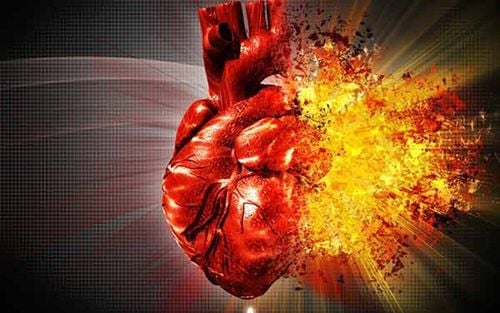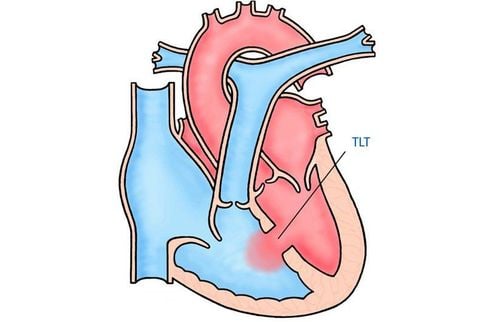This is an automatically translated article.
The article is professionally consulted by Master, Doctor Pham Van Hung - Department of Medical Examination & Internal Medicine - Vinmec Danang International General Hospital.
Congenital heart defects are a group of diseases that account for about 1% of all newborns. The cause of congenital heart defects is still not really clear, it may be genetic or during pregnancy, the mother is addicted to alcohol, drugs or viral infection. Unique ventricular heart disease also belongs to the category of congenital heart disease but is rarer than congenital septal defects.
1. What is a unique ventricular malformation?
In simple terms, single ventricle means that a baby is born with two atrioventricular valves entering the same chamber or a common AV valve in the atrioventricular cavity. To put it more simply, this child's heart would have no mitral or tricuspid foramen, left ventricular hypoplasia, or no pulmonary valvular foramen with right ventricular hypoplasia.2. Manifestations of unique ventricular malformation
Congenital heart defects of one ventricle are more common in boys with the following manifestations:Children with hypoplastic left heart syndrome; No orifice of the pulmonary artery with closed interventricular septum; Asymmetrical atrioventricular canal; Single ventricle or homologous syndrome; Double incompatibility with absence of tricuspid valve; No mitral valve with ventricular septal defect; The chamber has two entrances; There is no tricuspid valve with ventricular septal defect. Specifically, with clinical symptoms, children will have functional symptoms such as:
Expression of heart failure with shortness of breath, sweating, refusal to suckle;

Single ventricle with increased pulmonary circulation: Early and mid-systolic murmurs are heard on the left sternal border, low murmur gradually as the hole narrows; T1 has no abnormalities; T2 strongly split, T2 alone when pulmonary arterial pressure is high; When blood flow to the lungs is high, a diastolic murmur can be heard at the apex, and a Graham Steel murmur is heard at the left sternal border when pulmonary arterial pressure is high. Single ventricle with pulmonary stenosis: A systolic murmur is heard in the left 2nd intercostal space due to pulmonary artery stenosis, no valvular ejection sound because stenosis is usually below the pulmonary artery; T1 normal, T2 small and solitary. For this disease, echocardiography and cardiac catheterization are important laboratory tests and are the main criteria for diagnosis. Echocardiography helps physicians better understand the anatomy of the unique ventricle, investigates hemodynamics as well as contributes to surgical indications and long-term postoperative follow-up. Echocardiography combined with cardiac catheterization and angiography will help determine and specify the type of surgery for the child.
Unique ventricular congenital heart disease is a very severe form of congenital heart disease and currently surgical methods are only temporary, not completely curable. However, intervention with young children also requires coordination from many specialties as well as support from families to improve the health status of children in the best way.
Vinmec International General Hospital currently has all the professional conditions and technical facilities to perform unique methods of diagnosis and treatment of congenital ventricular malformations. Vinmec gathers a team of highly qualified and experienced cardiologists; modern medical equipment, up to international standards; professional service quality, helping to improve the efficiency of disease diagnosis and treatment.
For detailed advice on unique ventricular disease, please come directly to Vinmec health system or register online HERE.
Master, Doctor Pham Van Hung has 30 years of experience in examination and treatment of internal diseases, especially in Cardiology: coronary arteries, heart failure, heart valves, arrhythmias. ..Master, Dr. Hung used to hold the position of Deputy Head of Internal Cardiology Department and Head of Interventional Cardiology Unit at Da Nang General Hospital and is currently working at Department of Medical Examination and Internal Medicine, Internal Cardiology, and Cardiology. Interventional circuit at Vinmec Da Nang International General Hospital.
Please dial HOTLINE for more information or register for an appointment HERE. Download MyVinmec app to make appointments faster and to manage your bookings easily.














